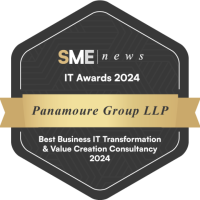The ERP Diaries…a series that takes you through the process of implementing an Enterprise Resource Planning (ERP) solution
Enterprise Resource Planning or ERP is common talk in the most dynamic organisations. It relates to a piece of software that houses and manages the day-to-day activities of businesses such as accounting, sales, purchasing, CRM, resource management, project management, compliance, supply chain…you name it.
Ultimately what a functioning ERP system does is tie together all the business-critical processes, which rely on the flow of data from different sources. By housing all your shared data in one place, you can eliminate data duplication and provide full data integrity with a single source of the “truth”.
For PE houses and investment teams a solid, functioning ERP can add to the eventual price and reduce value drag. For independent ambitious corporates, it can be as valuable as your workforce!
ERPs have been known to have a bad reputation as being hugely costly and time-consuming and then not delivering what was expected. This doesn’t have to be the case if the “time is right”, the company is in the right phase of growth and maturity, and the business case, RFI/RFP and scoping is aligned to the strategic roadmap you have outlined to achieve your goals
So all good then? Well, that depends. There’s no denying all organisations will benefit from an aligned, integrated approach to their operating model, but when is the right time to “start” to think about implementing an ERP, and how do you ensure you are ready, you make the right choice and importantly, who should look after the implementation?
The questions you need to ask are:
- What pain points are we trying to solve?
- Where do they appear on the business priority list?
- Will they deliver relevant ROI?
- Do the risks outweigh the benefits – and what are those risks?
In this ERP series, we will be looking to outline:
- When you need an ERP and your “readiness”
- How to choose the right solution
- How to scope and implement an ERP
- How to avoid the pitfalls of a delayed and false starting implementation
- How to successfully launch an ERP
- How to manage this within your business or portfolio; with emphasis on looking at culture and people (the biggest challenge)
Whilst there are a myriad of scholarly articles that “appear” to answer the above…. we’ve found many of them to be rather “cookie-cutter” in their approach. What we are looking to do is provide case studies and real working examples to bring to life the ERP process to ensure you’re fully armed with all you need to know.
Yes, we’re giving away some of our Panamoure “secret sauce”…..
The rest of this ERP series will be published shortly, sign up below to receive the latest parts directly to your inbox and we’ll give you more than a peek behind the wizard’s curtain.





